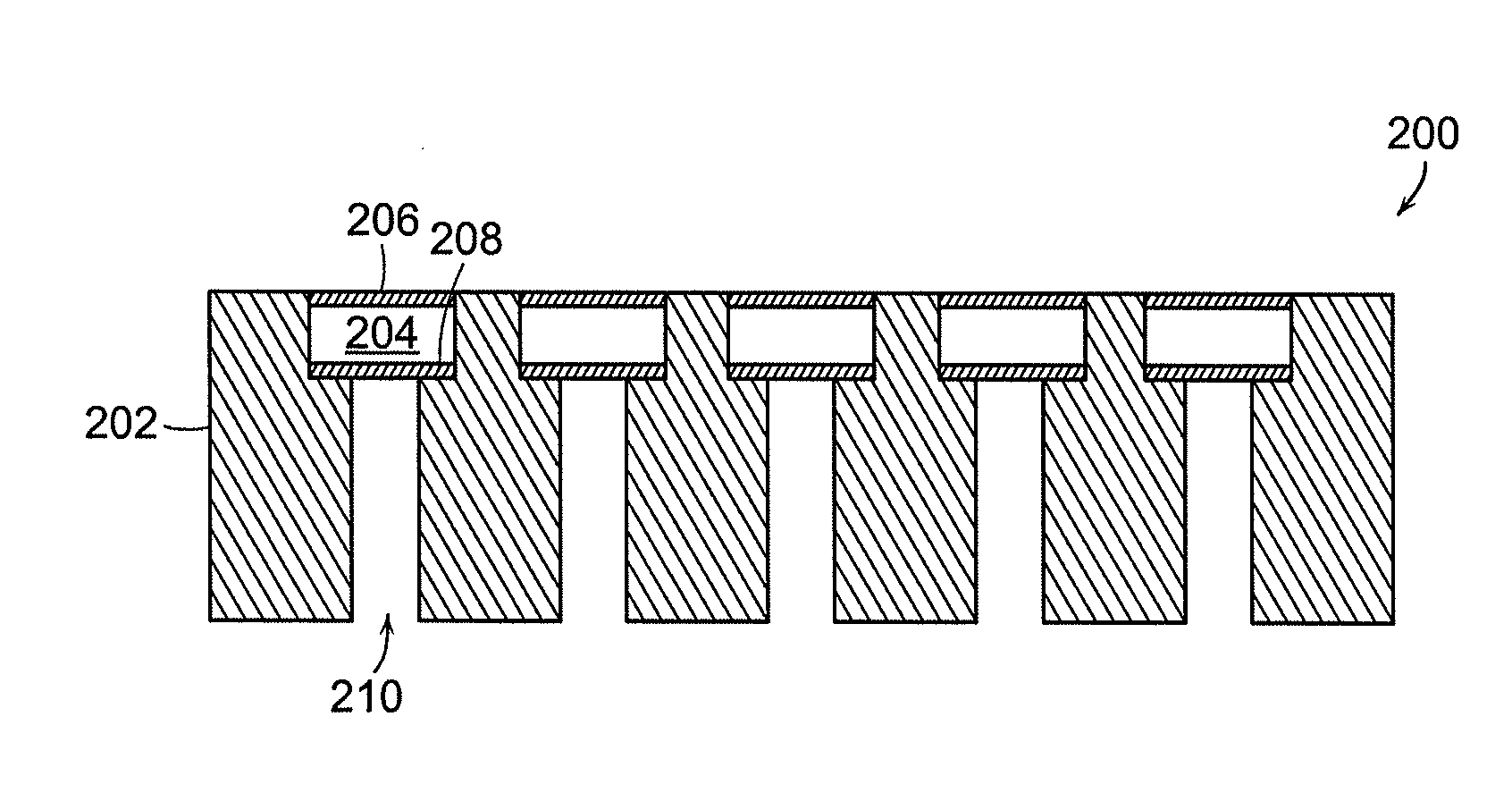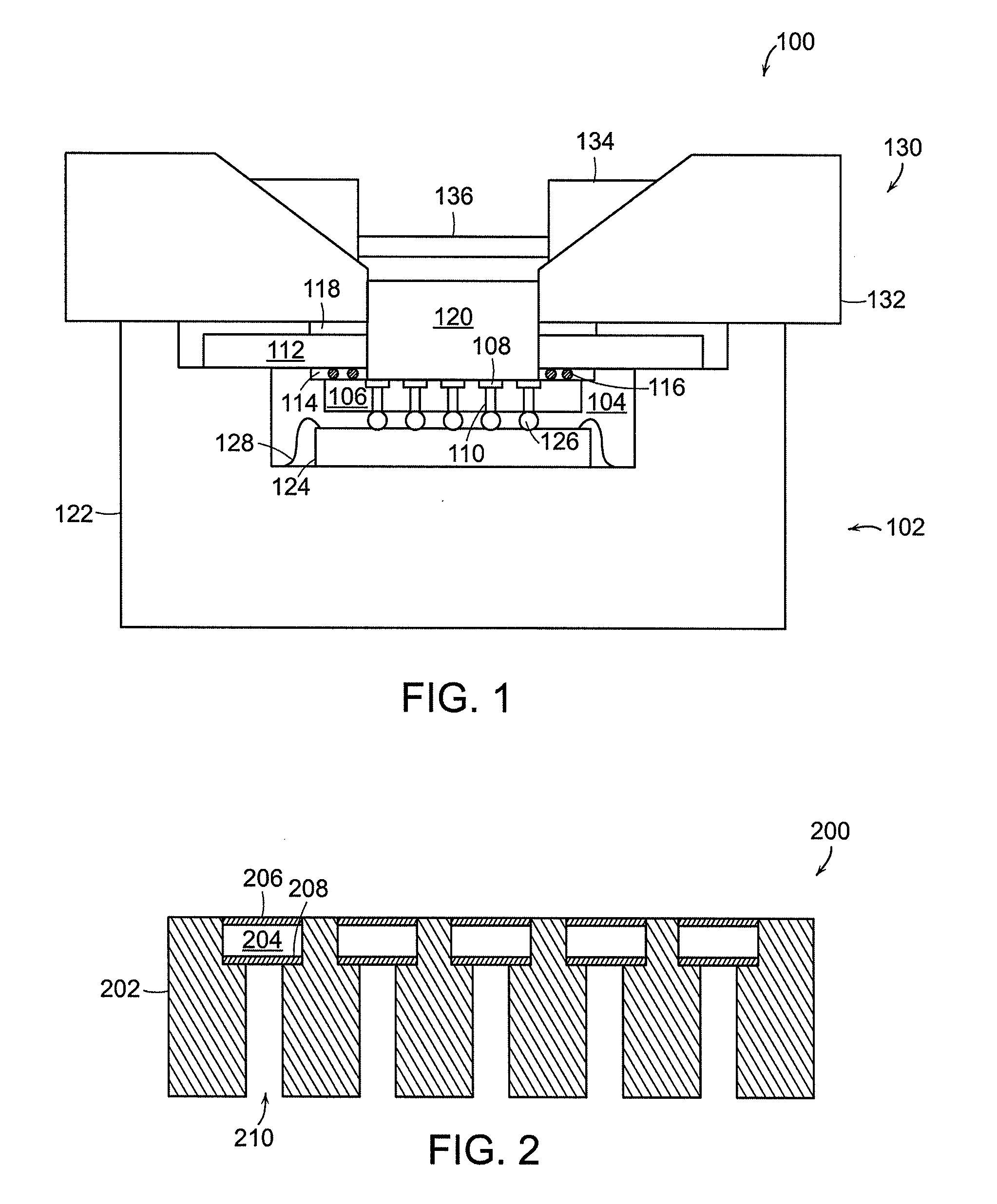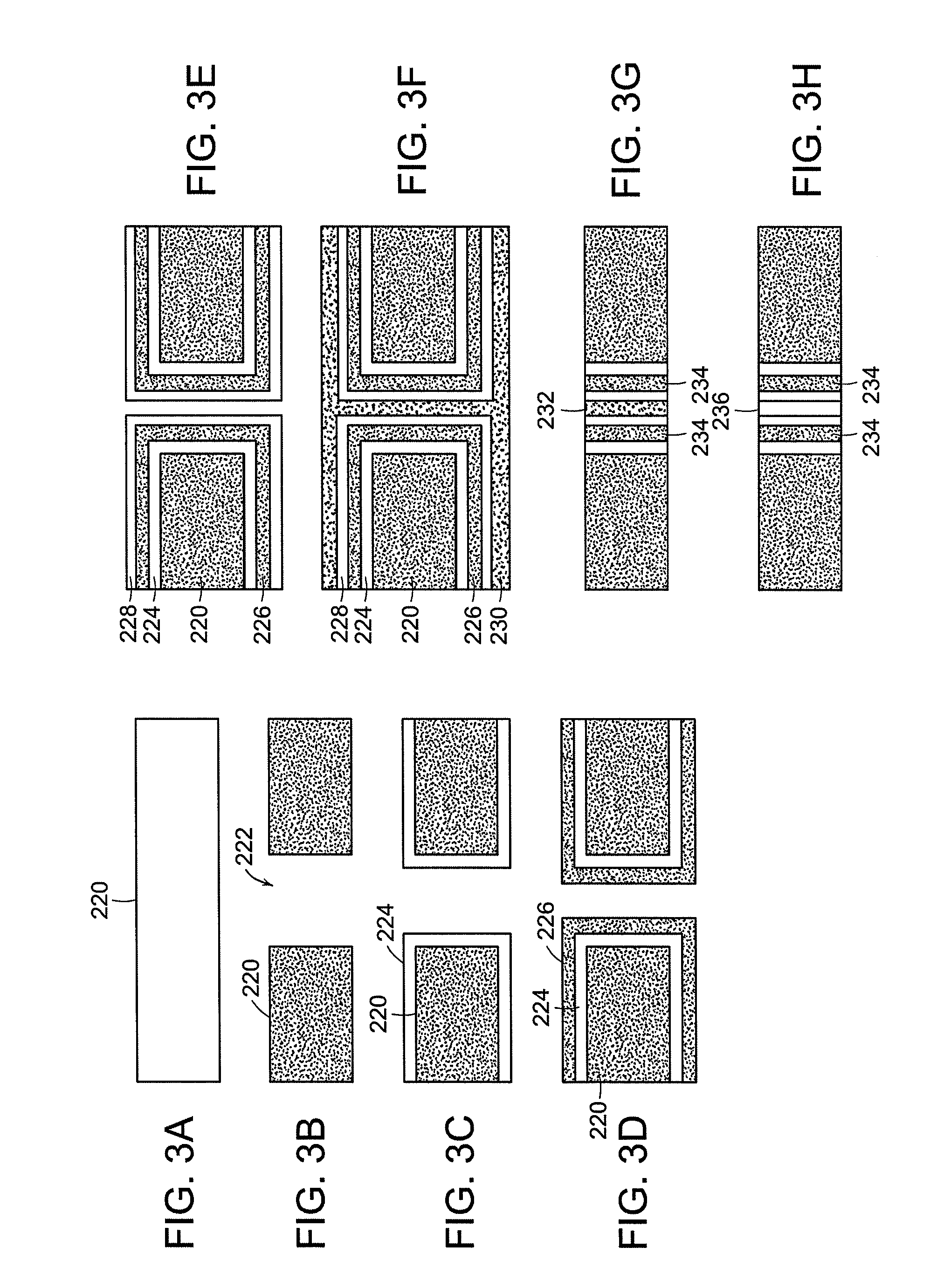Substrates having through-hole vias and method of making same
a technology of through-hole vias and substrates, applied in the field of sensors, can solve the problems of relatively insensitive electronic sensors and poor performance of acoustic sensors in aqueous environments, and achieve the effects of reducing costs, good electrical interfaces, and more accurate and sensitive analysis
- Summary
- Abstract
- Description
- Claims
- Application Information
AI Technical Summary
Benefits of technology
Problems solved by technology
Method used
Image
Examples
example 1
Use of a Resonant Sensor as a Density Sensor
[0210]As described above, the device detects changes in density conferred by concentration of biological molecules in the space above the sensor. Biological molecules such as protein (density 1.3) DNA (density 1.5) and RNA (density 1.7) are substantially higher than that of water (density 1.0). and substantially higher than those of cells (density 1.05-1.09). However, when present in a monolayer, this altered density is barely seen because it only creates a very thin layer of altered density and the net density in the sphere is not substantially changed. The sensitivity of detection of the devices described herein may be amplified by creating a 3 dimensional region of binding (using a hydrogel) which extends farther out into the hemisphere of water interrogated by the resonant membrane. The hydrogel-bonded resonant sensor is prepared as described in U.S. patent application Ser. No. 10 / 306,506 (Atty Docket No. 035300-0502, filed Nov. 26, 20...
example 2
Use of a Resonant Sensor to Map Expression of Proteins
[0212]Antibodies immobilized to the resonant sensor may be used to map the expression of cellular proteins, much as nucleic acid “chips” currently are used to map the expression of cellular RNAs. In this case, an unlabeled protein extract is applied to a resonant sensor array containing antibodies of interest embedded into a hydrogel. The hydrogel-bonded resonant sensor is prepared as described in U.S. patent application Ser. No. 10 / 306,506 (Atty. Docket No. 035300-0502, filed Nov. 26, 2002). These antibodies may detect all forms of the protein, or may be designed to detect specific conformers (e.g. phosphorylated forms). Binding of the protein confers a density shift, which may then be augmented by addition of a mass enhancement reagent. This reagent could be used to distinguish conformational subtypes (e.g. a phosphorylated form as above) or may be a natural dimerization partner. Thus allowing determinations of both structure (...
example 3
Use of a Resonant Sensor to Assess Enzyme Activities
[0213]An array of enzyme substrates is produced by embedding the substrates in a hydrogel. The hydrogel-bonded resonant sensor is prepared as described in U.S. patent application Ser. No. 10 / 306,506 (Atty Docket No. 035300-0502, filed Nov. 26, 2002). The resulting array is contacted with one or more enzymes of interest (e.g., kinases, hydrolases, esterases, etc.) and the resulting modification to each substrate is detected by a mass conferring specificity agent (e.g. a phosphor-tyrosine specific antibody or a phosphor specific chelate. Changes in mass or density within the sensed volume above each sensor in the array are monitored by monitoring resonant frequency of the sensor membrane.
[0214]An enzymatic activity sensor as described is used to detect changes in mass conferred by enzymatic addition of mass to a substrate. In the case of DNA assays, the rolling circle, anchored SDA, anchored PCR and anchored NASBA reactions may be mo...
PUM
| Property | Measurement | Unit |
|---|---|---|
| length | aaaaa | aaaaa |
| radius | aaaaa | aaaaa |
| radius | aaaaa | aaaaa |
Abstract
Description
Claims
Application Information
 Login to View More
Login to View More - R&D
- Intellectual Property
- Life Sciences
- Materials
- Tech Scout
- Unparalleled Data Quality
- Higher Quality Content
- 60% Fewer Hallucinations
Browse by: Latest US Patents, China's latest patents, Technical Efficacy Thesaurus, Application Domain, Technology Topic, Popular Technical Reports.
© 2025 PatSnap. All rights reserved.Legal|Privacy policy|Modern Slavery Act Transparency Statement|Sitemap|About US| Contact US: help@patsnap.com



